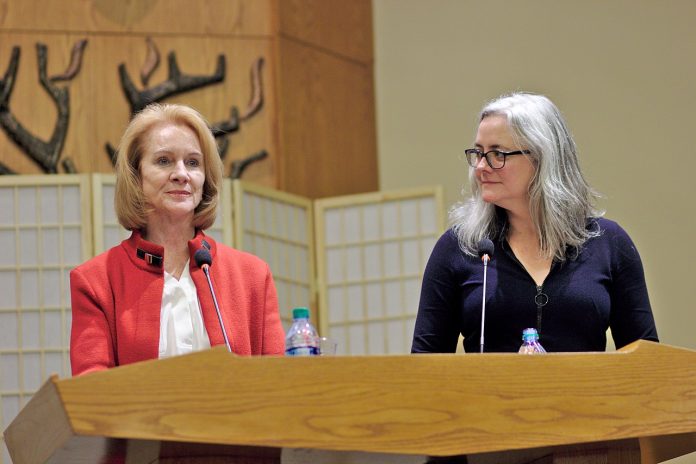
Mayor Durkan defends building for car infrastructure even while admitting that “People in Seattle like transit.”
Viaduct is closed?
— A Vaiku, by @140noStephen on October 27, 2011
On the bus, nose in a book
I hadn’t noticed
This haiku was written back in 2011 after the first Viadoom turned out to be a big disappointment for people who were craving for a post-apocalyptic traffic nightmare to play out on the city streets of Seattle’s downtown.
Now we have almost reached the end of the second Viadoom, the one that was supposed to be so big and so bad that Seattleites would be left clawing at gates of the new deep bore tunnel SR-99 tunnel, desperate to pay $1 billion in tolls to order escape the 90,000 vehicles clogging the streets above.
But that did not happen. Somehow the 90,000 vehicles that had been using the Alaskan Way Viaduct daily disappeared, and traffic proceeded on more or less as usual.
Transit advocates, like former Mayor McGinn, have stated that there is a lesson to be learned. Chiefly that people are adaptable and can change their habits and modes of transportation.
“It turns out,” said McGinn, in an interview on KUOW’s The Record, “that a lot of car trips aren’t that important. You can go into neighborhood to buy things instead of driving across town or you can pick a different time of day.”
However, current Mayor Jenny Durkan does not share McGinn’s perspective. In fact instead of staying out of the old tunnel debate (which took place, after all, far before Durkan’s time in elected office), the Mayor jumped right in–with a vigorous defense of the tunnel.
No SR-99 Tunnel. No Waterfront Park.
Mayor Durkan’s defense of the tunnel came directly after host Bill Radke asked if we could learn something from our experience with the viaduct closure and then played a clip from former Mayor McGinn.
[To hear the complete interview, click on the link here. The segment begins at 5:50.]
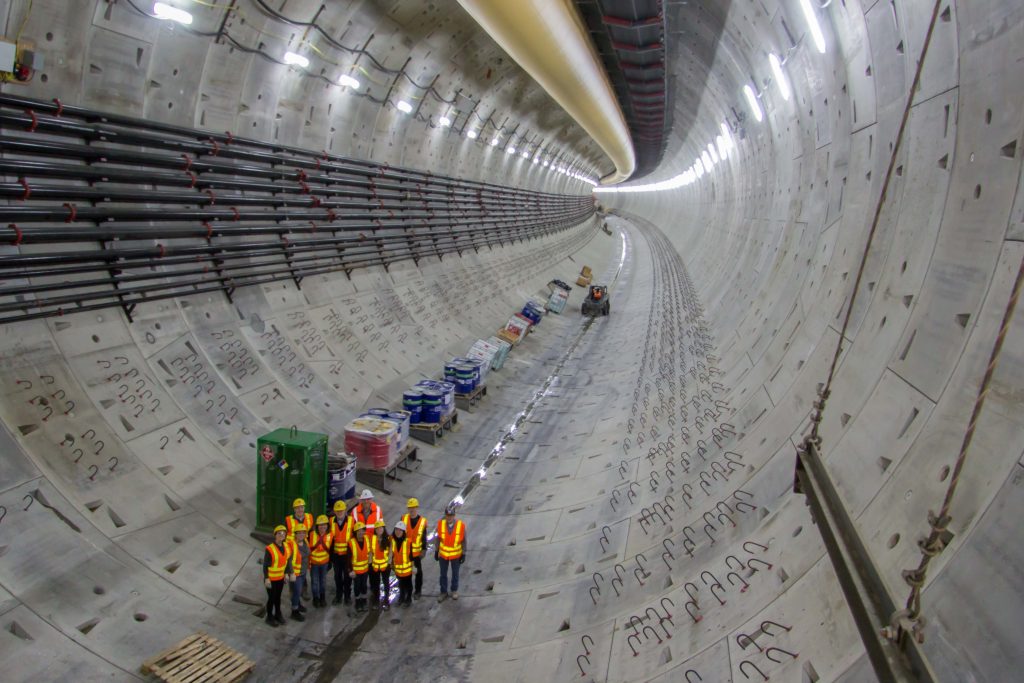
After making the joke that McGinn’s continued criticism of the tunnel demonstrated that “people can’t change their habits because [McGinn] just can’t quit fighting or trying to prove he was right,” Durkan went on to suggest that the current traffic patterns would not be sustainable because they were the result of “a concerted effort by a whole host of users, employers, and others trying to both change their behavior on when they work and how they get to work.”
And of course the word “vacation” was thrown out as a possible explanation for the lighter than expected traffic, bringing up images of Seattleites speckled across beaches from Santa Barbara to Cabo, sipping fruity cocktails during the long wait for the SR-99 tunnel.
But then something even stranger happened. After applauding Seattleites’ warm feelings toward transit, and even suggesting that certain transit improvements, such as more frequent Alki Water Taxi service connecting West Seattle to downtown, could become permanent, Durkan went on to make an oddly declarative statement.
It’s clear. Without that tunnel we would not be getting that 20 acre Waterfront Park that is going to [change] Seattle. So, you know, I’m glad that the voters finally decided what they decided and to move ahead with the tunnel.
Why Mayor Durkan would be so adamant about defending the tunnel decision may have to do with who her political allies are, such as tunnel champions former Governor Chris Gregoire and former Mayor Ed Murray.
Fact Check: Did We Need a Tunnel to Get a Park?
A review of the evidence makes it clear that Mayor Durkan’s statement was either dishonest or based on deeply flawed logic. Plans to build a park on the waterfront date back as far as the Forward Thrust in 1968, in which voters approved $5 million for the development of a waterfront park.
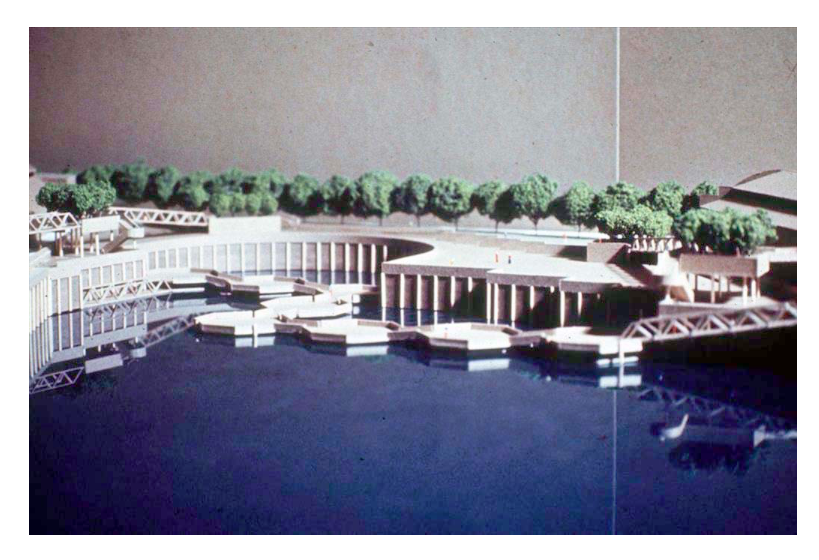
What is amazing is that people were already calling from the removal of the Alaskan Way Viaduct, which was then less than a decade old.
But after it was revealed that viaduct removal would cost about $100 million, critics backed off. A plan for a waterfront park developed by Rockrise & Associates, a San Francisco-based consulting team, was tossed around in various iterations during the early 1970’s. Eventually a scaled-back version of the plan was implemented in 1974 with the creation of a waterfront park at Pier 58. However, because it lacked the planned waterside esplanade and improved connections to downtown, the park had a “poor circulation pattern” which led to it being quickly deemed a failure, and at times liability.
But people continued to press for a park. In 2002, after the Nisqually Earthquake, Allied Arts, led by then Executive Director David Yeaworth, began its “Waterfront For All” campaign, igniting a civic conversation about what the public wanted for their future waterfront.
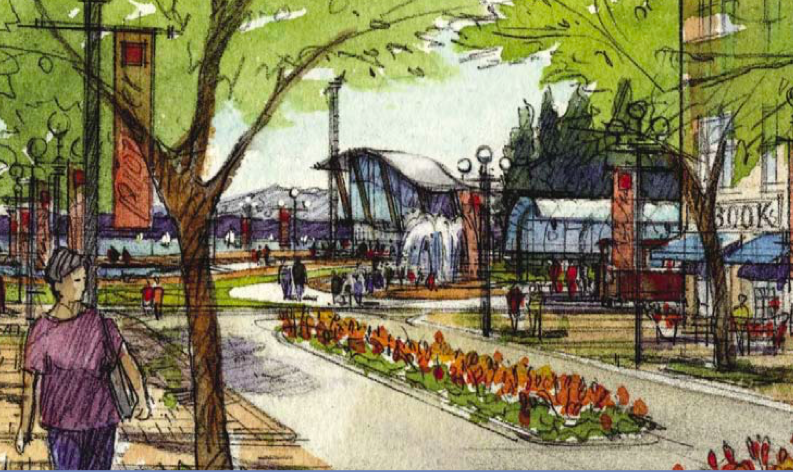
As conversation continued to muddle over the future of SR-99, the theme of creating a Waterfront Park that would operate as a “front porch” for the city and the “next great civic space” remained a constant.
In 2007, Seattle voters voted “No and Hell No” to two different plans for installing a new freeway on the waterfront. More than 55% of voters opposed a new elevated highway (e.g., Viaduct 2.0), and interestingly, more than 70% opposed the four lane cut and cover tunnel championed by then Mayor Greg Nickels.
It was clear that Seattleites wanted a better future for their downtown waterfront.
So when activists like Cary Moon’s People’s Waterfront Coalition began advocating for a surface street solution in lieu of a replacement viaduct or tunnel, creating a beautiful public waterfront was at the forefront of their plans.
Moon, along with activist Grant Cogswell, developed a concept called the “Seattle Strand.” The design was a runner up in a 2004 competition by Metropolis, and focused creating a dynamic public space that would remove the viaduct and restore connections to the water’s edge, while improving habitat along the seawall.
“We are a city that remembers its recent wilderness, a city in love with our watery terrain,” the proposal stated.
Controversy did continue over whether or not improvements to surface streets and transit could handle the amount carried by the viaduct, with opposing sides presenting different data.
Even so, there was never a serious plan to abandon the waterfront park. Even ill-fated efforts, such as State Rep. Frank Chopp’s plan to replace the viaduct with a “Megaduct” and the Initiative 123 plan to convert the viaduct into a High Line-style elevated park, paid heed to Seattleite’s desire to convert their waterfront into a great public space.
What’s Going to Happen When All Those Cars Come Back?
WSDOT is spending $4.4 million on a campaign to convince people to drive use the SR-99 tunnel. Current projections from WSDOT estimate that thousands more vehicle trips will be made through the tunnel during peak hours than were made on the former viaduct.
However, because the tunnel will not have downtown exits and will have tolls starting this summer, estimates from state transportation officials have suggested that daily trips in the tunnel will be about a third less than were made on the viaduct resulting in roughly 30,000 more cars on downtown surface streets.
Because of induced demand, which posits that traffic congestion actually worsens after bigger roads are built because increasing the amount and size of roads encourages more people to drive, we can expect that amount of vehicle trips in and out of downtown will increase when the tunnel (and the new Alaskan Way mega-boulevard planned for the surface) opens, thus worsening congestion and carbon emissions.
Such a development would fly in the face of the progress Seattle has made in recent year toward reducing the amount of vehicle trips made in the city. At the same our population has boomed, the number of vehicle trips has decreased while public transportation use has increased.

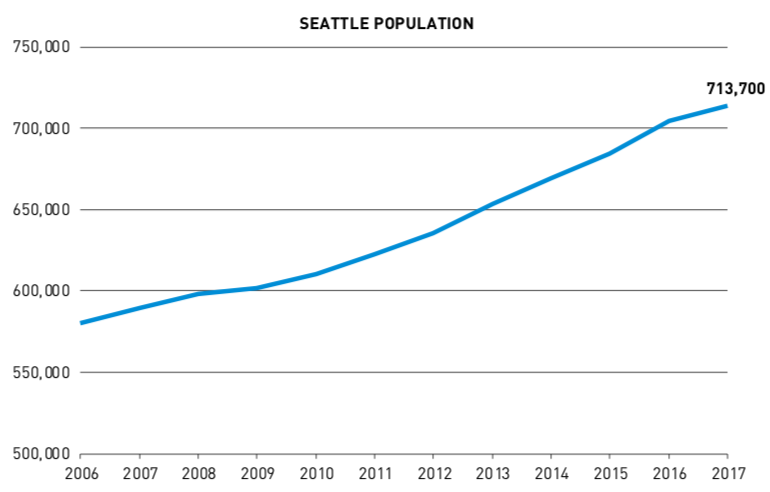
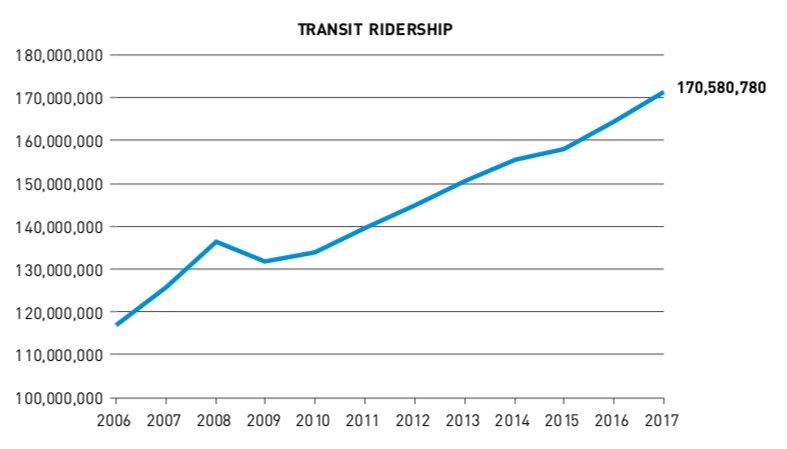
Data from the Seattle Department of Transportation (SDOT) along with more recent data acquired since the closure of the Alaskan Way Viaduct, suggests that Seattleites transportation habits have been changing, calling into question if it really was necessary to spend billions of dollars on new car infrastructure.
In 2011, voters did vote to move ahead with the tunnel. But like the vote to reject $900 million in grants from the federal government for rapid transit in 1978, it is very possible that the tunnel vote was a big mistake.
In order to move forward, Seattle’s leaders need to have to both the knowledge to understand our past, as well as the courage to question decisions that were made.
Was it wise for Mayor Durkan to come immediately to the defense of the SR-99 tunnel, despite the mounting evidence that investment in transit could have more positive impact on Seattle’s mobility and the health of the natural environment? No.
And was it fair for Mayor Durkan to use the Waterfront Park as an excuse for why we needed to invest billions of dollars into a tunnel intended to increase vehicle trips, thus increasing carbon emissions at a time in which we need to be taking dramatic actions to curb climate change? Hell no.
Natalie Bicknell Argerious (she/her) is a reporter and podcast host at The Urbanist. She previously served as managing editor. A passionate urban explorer since childhood, she loves learning how to make cities more inclusive, vibrant, and environmentally resilient. You can often find her wandering around Seattle's Central District and Capitol Hill with her dogs and cat. Email her at natalie [at] theurbanist [dot] org.


